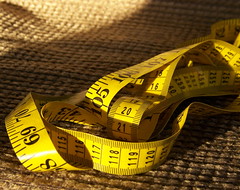One of the subjects I have to keep dragging myself back to is this idea that to make progress on resilience we must be able to measure it. This idea of measuring was one of the key drivers behind proposing the Resilience Observatory.
For those who accept that resilience is not a process, then we first have to create the tools and devices with which to measure progress.
There has been a significant change in that space recently as Amy Lee (Stephenson Resilience, UK) has launched her Business Resilience Intelligence Tool. There is a ‘mini’ version you can try, and Amy sends you back a short summary report. You can sign up for the trial on the link above.
This tool is not just something that was dreamed up to promote her consulting business, but is the product of her PhD research with the Resilience Organisations group at Uni of Canterbury, New Zealand. This tool has been tested against a number of organisations in New Zealand, and there is a report on that Auckland benchmarking exercise here.
This is rather exciting to see this type of well researched, but innovative, approaches to measuring and comparing resilience emerge.
You can find a useful case study of how Amy applied her Resilience Intelligence Tool to a Healthcare Organisation here.
As much as I admire Amy’s work, she is not the only one working in this space.
At the BCI Symposium in Sydney last year I shared a speaking session with Michael Lee, MIchael was also undertaking a PhD and presented on “Identifying the Markers of Organisational Resilience”. Michael is also approaching from the concept of emergence and spoke about the ability to “resist, rebound and adapt” as high level outcomes of resilience.
He also shared a typology of Organisational Resilience Styles which mapped against a two dimensional space. The dimensions being Crisis Orientation (from Pro-Active thru to Reactive) and Change Orientation (measured from Resistant to Adaptive). His case studies from the Katrina disaster in the US compared the Resistant/Reactive style of FEMA with the diametrically opposed Proactive/Adaptive style of Wal-Mart).
Interesting similarities between Michael’s and Amy’s work, in terms of their use of Adaptive Capacity and formal planning processes.
I look forward to reading more of Michael’s work when it is published.
Another interesting approach to this is being developed by Bruce Braes and David Brooks at Edith Cowan University in Perth, Western Australia. I am hopeful of participating in the next round of their research on a review panel.
You can get an idea of their thinking form this paper, Organisational Resilience: A Propositional Study to Understand and Identify the Essential Concepts. This paper contains a table summarising their characteristics of Organisational Resilience, which interestingly contains reference to contributing disciplines.
Finally the Torrens Resilience Institute, Adelaide, South Australia have applied the Kaplan & Norton concept of a Balanced Scorecard as a means to measure resilience. This is an approach that may be well accepted, as it is represents the adaptation of a model that is already familiar to Executives for translating strategy and managing performance.
I do not know much more about their 20 measures, but hope to find out and share with you later.
I am sure there are others, and would love to hear from anybody that can point me in the direction of other similar research.

Leave a Reply